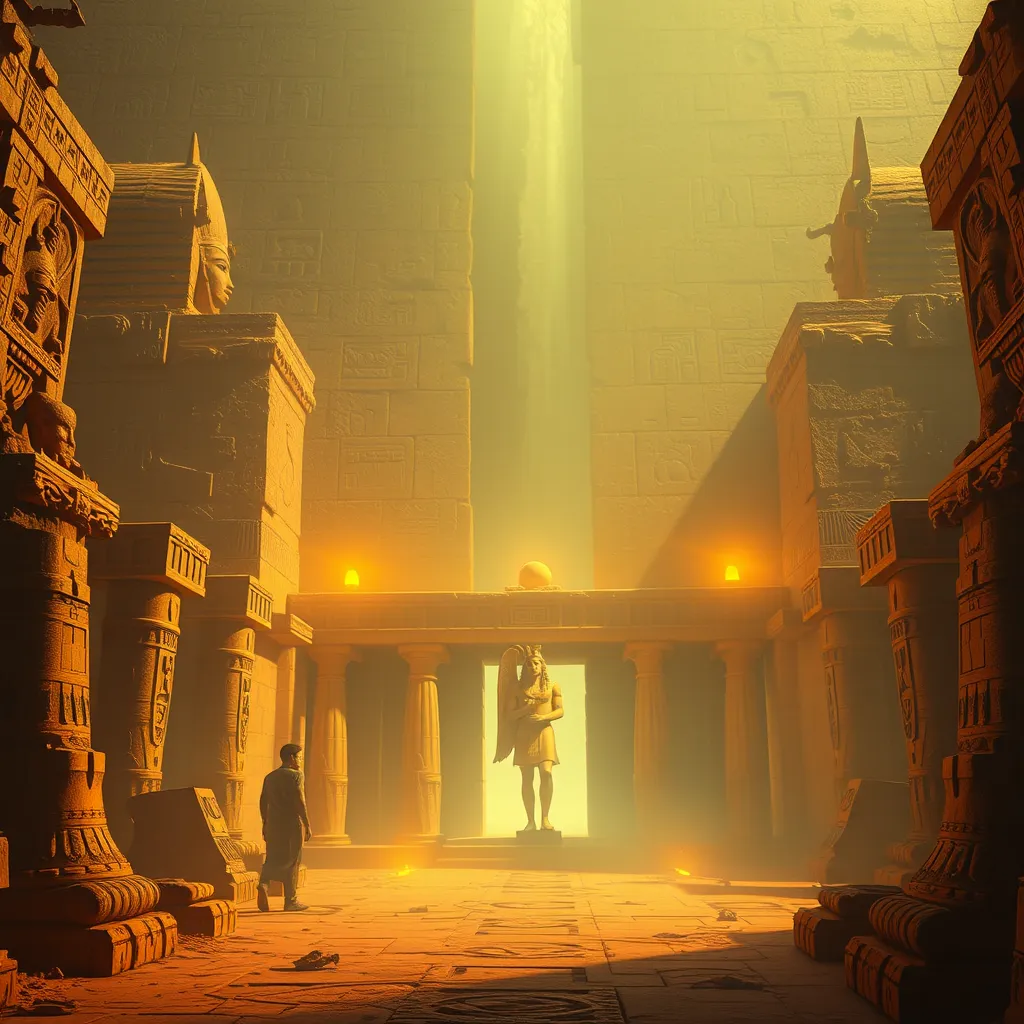The Duat: Unveiling the Secrets of the Afterlife
I. Introduction to the Duat
The Duat, often referred to as the Egyptian underworld, holds a central place in ancient Egyptian culture and belief systems. This mystical realm is where the souls of the deceased journey after death, facing a series of challenges and ultimately seeking eternal life. The significance of the Duat in ancient Egypt cannot be overstated, as it encapsulates the civilization’s views on mortality, morality, and the divine.
In ancient Egyptian culture, the afterlife was not merely an end but a continuation of life in a different form. Egyptians believed that the soul, or ‘ba,’ would embark on a journey through the Duat, requiring guidance and protection from deities. This belief system provided the foundation for elaborate funerary practices and a rich tapestry of myths surrounding death and resurrection.
II. Historical Context of the Duat
The concept of the Duat can be traced back to the earliest texts of ancient Egypt, with references found in the Pyramid Texts dating to the Old Kingdom (c. 2686–2181 BCE). These early inscriptions provide glimpses into the beliefs surrounding the afterlife, emphasizing the importance of the soul’s journey and the various realms within the Duat.
Through the centuries, beliefs about the Duat evolved, reflecting the changing dynamics of Egyptian society. During the Middle Kingdom (c. 2055–1650 BCE), the afterlife became more accessible to the average individual, as opposed to being reserved solely for royalty. This democratization of beliefs influenced the way the Duat was depicted in funerary art and literature, culminating in the Book of the Dead, a guide for the deceased navigating the afterlife.
III. The Structure of the Duat
The Duat is often described as a complex landscape, featuring various realms and locations that the soul must traverse. It is commonly depicted as dark and mysterious, filled with rivers, mountains, and gates. Key locations within the Duat include:
- The Field of Reeds: A paradise akin to the earthly realm, where the righteous enjoy eternal bliss.
- The Hall of Judgment: The critical location where the deceased undergoes the Weighing of the Heart ceremony.
- The Lake of Fire: A place of punishment for those who fail to pass the judgment.
Each of these locations plays a significant role in the soul’s journey, representing different stages of the afterlife and the moral judgments that accompany them.
IV. Deities and Spirits of the Duat
The Duat is populated by numerous deities and spirits, each with specific roles in guiding and protecting the souls of the deceased. Major gods associated with the afterlife include:
- Osiris: The god of the afterlife and resurrection, overseeing the judgment of souls.
- Anubis: The god of embalming and the protector of graves, who guides souls through the Duat.
- Thoth: The god of wisdom and writing, who records the results of the Weighing of the Heart.
These deities worked in tandem to ensure that the deceased could navigate the challenges of the Duat, offering wisdom, protection, and judgment throughout the journey.
V. The Journey Through the Duat
The journey through the Duat begins at the moment of death. The soul, represented as the ‘ba,’ separates from the body and embarks on a perilous journey. This journey is fraught with challenges, including:
- Crossing rivers filled with dangerous creatures.
- Navigating through dark passages and facing monstrous guardians.
- Encountering various trials that test the soul’s worthiness.
Each challenge faced in the Duat serves to affirm the moral integrity of the deceased and their adherence to the principles of Ma’at, the ancient Egyptian concept of truth and cosmic order.
VI. The Weighing of the Heart Ceremony
One of the most critical moments in the journey through the Duat is the Weighing of the Heart ceremony, held in the Hall of Judgment. During this ceremony, the heart of the deceased is weighed against the feather of Ma’at, symbolizing truth and justice.
If the heart is lighter than the feather, it indicates that the individual lived a life of virtue and is granted passage to the Field of Reeds. Conversely, if the heart is heavier, it signifies a life of wrongdoing, and the soul faces dire consequences, often being devoured by Ammit, the devourer of the dead.
This ceremony highlights the ancient Egyptians’ deep-seated belief in moral accountability and the importance of living a righteous life.
VII. Funerary Practices and Beliefs
Ancient Egyptians invested considerable effort in funerary practices to ensure a safe passage through the Duat. These practices included:
- Embalming: Preserving the body for the afterlife through complex mummification techniques.
- Burial Customs: Ceremonial rituals and offerings made to honor the deceased and appease the gods.
- Tombs and Inscriptions: Elaborate tombs adorned with spells and inscriptions from the Book of the Dead, designed to assist the deceased in their journey.
These customs were not merely ritualistic but were believed to be essential for the deceased to navigate the Duat successfully and attain eternal life.
VIII. The Legacy of the Duat in Modern Culture
The fascination with the Duat and ancient Egyptian beliefs about the afterlife continues to resonate in modern culture. The imagery and concepts associated with the Duat have influenced various forms of art, literature, and popular media. Notable influences include:
- Literature: Works such as “The Egyptian Book of the Dead” and contemporary novels exploring themes of life after death.
- Art: Artistic representations of the Duat in museums and exhibitions that highlight ancient Egyptian civilization.
- Film and Television: Movies and shows that depict ancient Egyptian mythology, often referencing the Duat and its deities.
This enduring legacy underscores the rich tapestry of beliefs surrounding the afterlife in ancient Egypt, inviting continued exploration and fascination with a civilization that profoundly understood the complexities of life and death.




